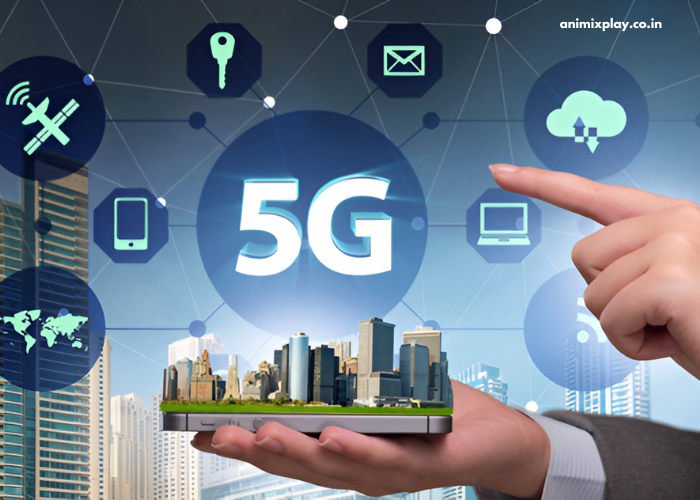In the ever-evolving digital landscape, connectivity plays a crucial role in driving innovation and societal progress. Among the most transformative developments in recent years is the advent of 5G networks, heralding a new era of technology advancements. With its promise of ultra-fast speeds, low latency, and enhanced connectivity, 5G is not merely an upgrade from its predecessor, 4G, but a revolutionary leap that is shaping industries, redefining user experiences, and laying the foundation for a hyper-connected future.
This comprehensive article explores how 5G is influencing various sectors, the technological breakthroughs it enables, and the challenges that must be addressed to unlock its full potential.
What is 5G and How Does It Work?
5G, short for fifth-generation mobile networks, represents a significant step forward in wireless communication. It operates on three key spectrum bands—low-band, mid-band, and high-band (millimeter wave)—to deliver unprecedented performance:
- High Speed: 5G offers data transfer speeds of up to 10 Gbps, which is about 100 times faster than 4G.
- Low Latency: The latency in 5G networks can be as low as 1 millisecond, compared to 20-30 milliseconds in 4G.
- Massive Device Connectivity: With its enhanced capacity, 5G can support up to 1 million devices per square kilometer.
These capabilities are achieved through advanced technologies such as massive MIMO (Multiple Input Multiple Output), beamforming, and network slicing, enabling tailored solutions for diverse applications.
The Role of 5G in Shaping Technology Advancements
Revolutionizing IoT Ecosystems
The Internet of Things (IoT) has been growing steadily, but 5G is poised to unleash its true potential. By providing robust and reliable connectivity for billions of devices, 5G enables seamless communication between sensors, machines, and systems. This has profound implications for:
- Smart Cities: Real-time traffic management, smart lighting, and efficient waste management are becoming feasible with 5G-enabled IoT devices.
- Healthcare: Remote patient monitoring, wearable devices, and real-time data analysis are transforming how healthcare services are delivered.
- Industrial Automation: Smart factories leveraging 5G-driven IoT can optimize production lines, reduce downtime, and enhance productivity.
Empowering Autonomous Vehicles
The automotive industry is undergoing a paradigm shift with the development of autonomous vehicles. 5G networks play a pivotal role by:
- Enabling Vehicle-to-Everything (V2X) communication, where vehicles interact with each other, infrastructure, and pedestrians.
- Supporting ultra-low latency for instantaneous decision-making, crucial for navigating dynamic environments.
- Ensuring seamless updates for onboard systems through Over-the-Air (OTA) mechanisms.
The result is safer, more efficient transportation systems and a significant reduction in traffic congestion and emissions.
Transforming Media and Entertainment
The way we consume media is changing dramatically, thanks to 5G. This technology is shaping the future of entertainment in several ways:
- Augmented Reality (AR) and Virtual Reality (VR): With 5G’s high bandwidth and low latency, immersive experiences such as virtual concerts, interactive gaming, and AR-based shopping are becoming mainstream.
- Streaming Services: 5G enables seamless 4K and 8K video streaming, eliminating buffering and enhancing user experiences.
- Cloud Gaming: Gamers can access high-performance games on demand without requiring expensive hardware, as 5G facilitates real-time processing on cloud servers.
Advancing Healthcare Innovations
5G is revolutionizing healthcare by enabling technologies that were previously considered futuristic:
- Remote Surgeries: Surgeons can perform operations using robotic tools controlled remotely, thanks to 5G’s low latency.
- Telemedicine: Real-time video consultations and diagnostics are improving healthcare access in remote areas.
- AI-Powered Diagnostics: The massive data throughput of 5G allows faster and more accurate analysis of medical images, enhancing diagnostic accuracy.
Driving Industry 4.0
Industry 4.0, characterized by the convergence of digital and physical systems, heavily relies on 5G to power innovations like:
- Predictive Maintenance: Sensors connected via 5G can monitor equipment health in real time, predicting failures before they occur.
- Collaborative Robots: Known as cobots, these robots can work alongside humans in factories, leveraging 5G’s reliability for precise coordination.
- Digital Twins: Real-time simulation of physical systems using digital twins is made feasible with the speed and data capacity of 5G.
Enhancing Education and Training
5G is bridging the gap in education and training by enabling:
- Immersive Learning: AR and VR-based training programs for complex subjects such as medicine, engineering, and military operations.
- Remote Education: High-quality, real-time video lectures and interactive sessions are improving access to education in underserved regions.
- Smart Campuses: IoT-enabled smart classrooms and connected devices are reshaping the learning environment.
Boosting Financial Services
The financial sector is leveraging 5G to enhance operational efficiency and user experiences:
- Real-Time Transactions: 5G ensures secure and instant processing of financial transactions.
- Mobile Banking: Enhanced network speed improves the reliability and functionality of mobile banking apps.
- Fraud Detection: AI algorithms, powered by 5G, can analyze large datasets in real time to identify and mitigate fraud.
Challenges in Implementing 5G
Despite its transformative potential, the widespread deployment of 5G networks faces several challenges:
Infrastructure Costs
Building 5G infrastructure, including deploying small cells, fiber optics, and upgrading existing networks, requires significant investment. For developing nations, this poses a considerable financial burden.
Spectrum Allocation
The limited availability of spectrum and regulatory hurdles in allocating it for 5G use can slow adoption.
Security Concerns
The interconnected nature of 5G networks increases vulnerabilities to cyberattacks. Developing robust security protocols is critical to safeguarding data and systems.
Environmental Impact
The energy consumption of 5G infrastructure is higher than previous generations, raising concerns about its environmental footprint.
Future Prospects of 5G Technology
As 5G continues to roll out globally, its impact will extend beyond the applications discussed above. Emerging technologies such as 6G, quantum computing, and artificial general intelligence (AGI) are likely to build upon the foundation laid by 5G.
Innovations on the horizon include:
- Holographic Communication: Enabling life-like holographic calls for a more immersive interaction.
- Edge Computing: Processing data closer to the source reduces latency and enhances real-time decision-making.
- Smart Agriculture: Precision farming with 5G-enabled drones and sensors can optimize crop yields and resource utilization.
Conclusion
The advent of 5G networks marks a pivotal moment in technological evolution, unlocking new possibilities across industries. Its unmatched speed, low latency, and capacity to connect a vast array of devices are driving advancements in IoT, autonomous vehicles, media, healthcare, and beyond. However, the journey to a fully connected 5G world is not without challenges, from infrastructure costs to security concerns.
As stakeholders across the private and public sectors collaborate to address these hurdles, the true potential of 5G will be realized, ushering in an era of unprecedented innovation and connectivity. For businesses and individuals alike, adapting to and leveraging the power of 5G is no longer a choice but a necessity in this rapidly evolving digital age.
By embracing 5G, we are not only enhancing current technologies but also paving the way for breakthroughs that will shape the future for generations to come.




